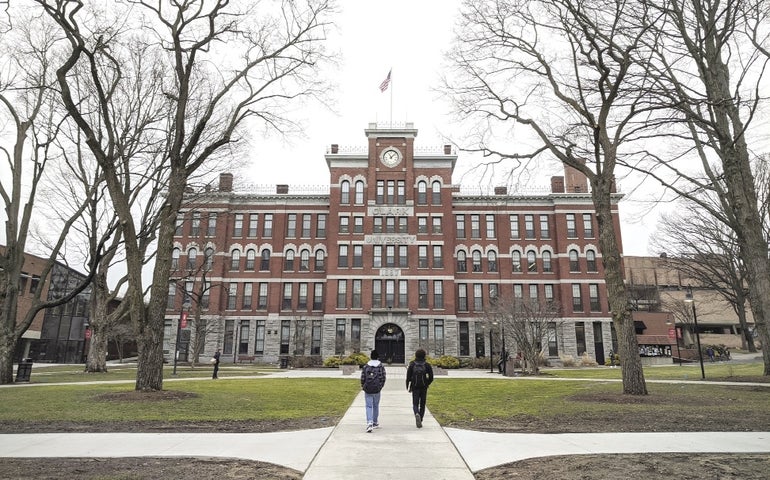The year has been one of recovery and resilience for schools like Clark University and Worcester Polytechnic Institute. Meanwhile, Becker College’s closure served as a stark reminder of the fate many smaller institutions may be facing.
Get Instant Access to This Article
Subscribe to Worcester Business Journal and get immediate access to all of our subscriber-only content and much more.
- Critical Central Massachusetts business news updated daily.
- Immediate access to all subscriber-only content on our website.
- Bi-weekly print or digital editions of our award-winning publication.
- Special bonus issues like the WBJ Book of Lists.
- Exclusive ticket prize draws for our in-person events.
Click here to purchase a paywall bypass link for this article.
As the smoke from the coronavirus pandemic clears, a divide is materializing within Central Massachusetts higher education. The year has been one of recovery and resilience for schools like Clark University and Worcester Polytechnic Institute, who are pushing forward ambitious investment plans. Meanwhile, Becker College’s closure in the spring served as a stark reminder of the fate many smaller institutions may be facing.
Dropout and enrollment questions
Most of higher education had a slight comeback in enrollment this year, or at least plateaued in the case of state schools, but the full damage from the pandemic might still be forthcoming. Educational professionals at all levels are reporting high failure rates and behavioral problems in the classroom. For students, a year of remote learning was a year of education essentially missed. Both college students and high schoolers considering college may be reeling from academic regression, burnout, and economic challenges, the latter of which is the most common reason college students drop out. Higher education may be newly challenged to entice and keep students in 2022. It’s possible the burnout seen in the country’s workforce will be mirrored in younger populations, prompting students to seek alternatives to higher education.
Investments in vocational learning
A nationwide talent and labor shortage has touched nearly every industry, as Americans are reevaluating their career priorities and wages are rising for jobs that don’t require a college degree. Already, schools are moving to meet this unique moment, with Quinsigamond Community College in Worcester offering free career training for workers who lost their jobs during the pandemic, Fitchburg State University providing a new teacher residency program, and Anna Maria College launching a social work and counseling program to get more mental healthcare providers in the workforce. This workforce-oriented education style is one many schools, particularly public higher ed institutions, may be gravitating toward.
Greater diversity investments
After many earnest statements from colleges in the wake of George Floyd’s police murder in 2020, the past year has provided the chance for administrators to walk the walk. The last five individuals appointed to Clark’s leadership team were all non-white, making nearly 60% of the school’s administration women and/or people of color. Meanwhile, the College of the Holy Cross inaugurated its first Black president. The coming year will be a time for colleges to make financial investments in diversity initiatives. All eyes are on Worcester’s private institutions making big money moves, as WPI just launched its largest-ever fundraising campaign and Clark acquired a seven-acre vacant lot across from its campus. The results of such investments will be indicative of colleges’ dedication to diversity and equity.

